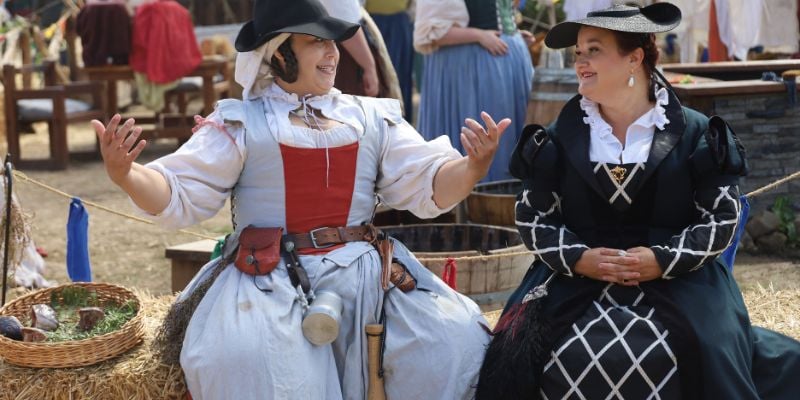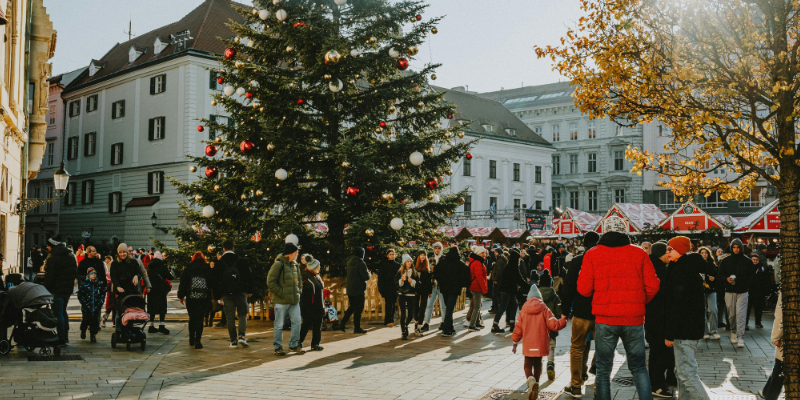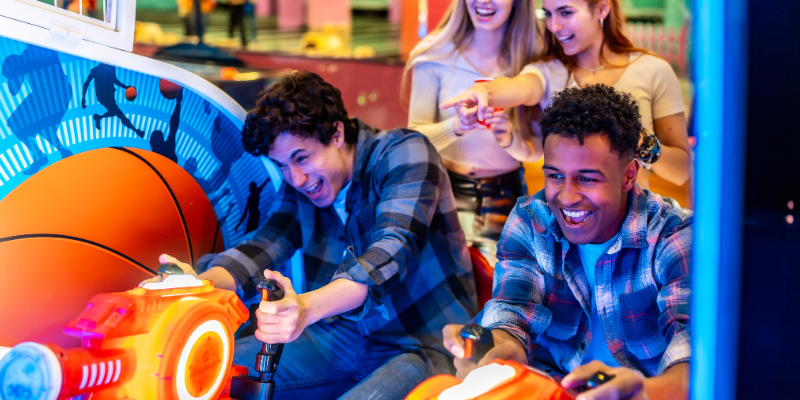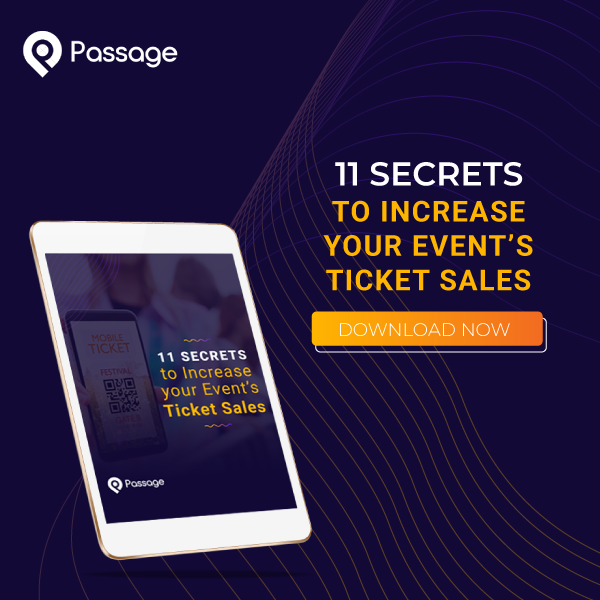Get ready to toast to Her Majesty’s health, quaff an ale, and cheer for the jousting knight of your choice. We’re headed to the Renaissance Fair!
There are so many things to do at a Renaissance Festival: history, fantasy, role-playing, and immersive experiences collide. And so many things to plan! Whether you’re a seasoned professional or planning your first fair, there are 9 essential components that every festival should include.
Let’s dive into those must-haves, plus a little background on what Renaissance Fairs are all about. We’ve even included a step-by-step planning guide to help make your job a little bit easier.
What is a Renaissance Fair?
A Renaissance Fair, also known as a Renaissance Faire, Renaissance Festival, or Medieval Faire, is an event that aims to recreate and celebrate the culture, arts, and activities of the European Renaissance period, which spanned roughly from the 14th to the 17th century. These fairs typically take place in outdoor settings, often in parks or open fields.
Renaissance Faires provide a unique and immersive experience for attendees to step back in time and get a taste of the culture, arts, and lifestyle of the historical Renaissance period. While they aim to capture the essence of the era, it's important to note that these events are not strict historical reenactments and often incorporate elements of fantasy and entertainment as well.
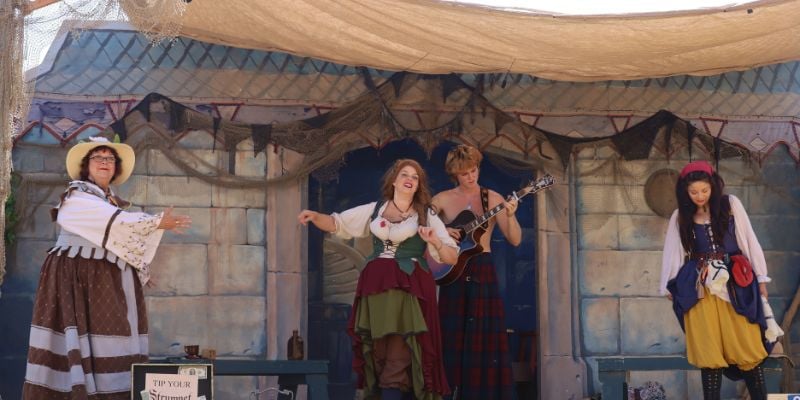
What Year is the Renaissance Festival Based On?
Renaissance festivals are primarily based on the European Renaissance period, which generally spans from the 14th century (around 1300) to the 17th century (around 1600). This era saw a significant rebirth in art, science, literature, and philosophy after the Middle Ages. While the exact historical focus can vary between different festivals, most draw inspiration from England during the reign of Elizabeth I (1558-1603), often referred to as the Elizabethan era, as it was a period of great cultural flourishing. This allows for a rich tapestry of characters, costumes, and activities that capture the spirit of innovation, exploration, and dramatic flair that characterized the Renaissance.
The History of Renaissance Fairs in the U.S.
Renaissance Fairs in the United States have a relatively modern history, dating back to the mid-20th century. Here's an overview of their development:
1950s - 1960s: The Origin
The concept of the modern Renaissance Fair is often credited to Phyllis and Ron Patterson, who organized the first known Renaissance Fair in the United States in 1963. This event, called the "Renaissance Pleasure Faire," was held in Southern California as a way to combine historical education with entertainment. It aimed to recreate the atmosphere of an English village during the Renaissance period and featured period-appropriate costumes, performances, and crafts.
1970s - 1980s: Growth and Expansion
The success of the Renaissance Pleasure Faire led to the growth of similar events across the country. Many new fairs were established, each with its own unique themes and features. These fairs began to spread beyond California to other states, such as Texas, New York, and Maryland.
1990s - 2000s: Diversification and Popularity
During this period, Renaissance Fairs continued to expand in popularity and diversity. Fairs often incorporated elements of fantasy and mythology, broadening their appeal beyond strict historical accuracy. This allowed for more creativity in both the themes and entertainment offerings.
Today: Continuing the Tradition
Renaissance Fairs have become an established part of American cultural and entertainment landscape. They are held in various states throughout the year, typically during the spring and summer months. While some fairs maintain a focus on historical authenticity, others embrace a more fantastical approach, incorporating elements from different time periods and cultures, and even adding elements of science fiction and other genres.
Overall, Renaissance Fairs in the U.S. have evolved from a relatively niche concept to a widely recognized and enjoyed form of entertainment. They continue to attract attendees who are interested in history, fantasy, role-playing, and immersive experiences. The diversity of themes and activities offered at these events has contributed to their ongoing popularity.
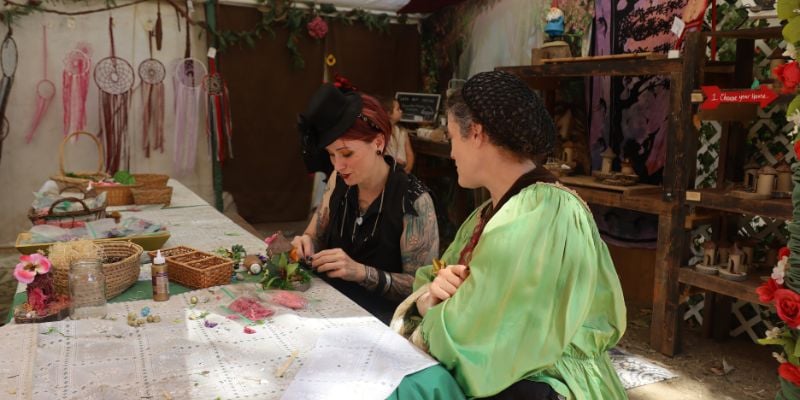
9 Must-Haves for Your Renaissance Fair: Essential Things to Do at a Renaissance Festival
A successful Renaissance Fair should offer a well-rounded experience that captures the spirit of the historical era while providing entertainment and engagement for attendees. Here are nine things to do at a Renaissance Festival that you should make sure to include:
- Costumed Participants: Engage skilled actors, performers, and reenactors to portray various historical and fantastical characters. Their interactions with attendees contribute to the immersive atmosphere. For attendees, interacting with these characters is one of the best things to do at a Renaissance festival!
- Entertainment Variety: Curate a diverse lineup of entertainment, including jousting tournaments, stage plays, musical performances, comedy acts, fire shows, magic acts, and interactive demonstrations of period crafts and skills. There's always something exciting happening!
- Artisan Vendors: Invite skilled artisans and craftsmen to showcase and sell their wares, such as handcrafted jewelry, leather goods, pottery, textiles, and woodworking items. This adds authenticity and provides attendees with unique shopping opportunities for unique souvenirs.
- Authentic Food and Drink: Offer a range of food and beverage options inspired by the Renaissance period, including roasted meats, hearty stews, breads, pastries, mead, and other traditional fare. Indulging in delicious, themed food is a highlight for many fair-goers.
- Interactive Activities: Provide opportunities for attendees to participate in hands-on activities like archery, fencing, dance workshops, and crafting, allowing them to experience aspects of the Renaissance firsthand. These interactive experiences are truly memorable.
- Themed Decor and Structures: Create an immersive environment by decorating the fairgrounds with period-appropriate decorations, banners, signs, and thematic structures that resemble a Renaissance village or market. The ambiance alone is an attraction.
- Educational Demonstrations: Include educational demonstrations that showcase historical skills, professions, and technologies of the time, such as blacksmithing, weaving, herbal medicine, and calligraphy. Learn something new while having fun!
- Children's Area: Designate a family-friendly space with activities tailored for children, such as games, crafts, storytelling, and simple interactive performances. This encourages families to attend and participate together.
- Costume Encouragement: Encourage attendees to embrace the spirit of the event by dressing in Renaissance-inspired costumes. This adds to the overall ambiance and helps attendees feel more connected to the experience. Don't be afraid to dress up!
While these are some essential elements, remember that the specifics may vary based on the theme and scope of your Renaissance Fair. Strive to create a balanced and engaging event that caters to a wide range of interests and ages, offering an enjoyable and memorable experience for all who attend.

Sample Timeline for Planning Your Renaissance Fair
The timeline for planning a Renaissance Fair can vary depending on factors such as the scale of the event, the complexity of the activities, the number of participants and vendors, and the availability of resources. However, a general guideline for planning a successful Renaissance Fair is to start at least a year in advance. Here's a breakdown of the planning stages:
12-18 Months Before the Fair: Initial Planning
- Define the event's theme, scope, and goals.
- Secure a suitable venue and obtain necessary permits.
- Start reaching out to potential participants, performers, vendors, and sponsors.
- Create a budget and financial plan for the event.
- Develop a preliminary marketing strategy to start generating interest.
9-12 Months Before the Fair: Detailed Planning
- Finalize contracts with key participants, performers, and vendors.
- Develop a detailed event schedule, including entertainment lineup, performance times, and activity schedules.
- Plan logistical details such as ticketing, parking, amenities, and security.
- Begin promoting the event through social media, websites, and local media outlets.
6-9 Months Before the Fair: Vendor Recruitment and Preparation
- Continue recruiting vendors, artisans, and performers.
- Coordinate costume guidelines for participants and encourage costume preparation.
- Finalize marketing efforts and start selling tickets.
- Plan and secure any necessary equipment and infrastructure.
3-6 Months Before the Fair: Finalization and Promotion
- Confirm all contracts and agreements with participants and vendors.
- Finalize event schedules and share them with participants.
- Continue marketing and promotional efforts.
- Set up online and in-person ticket sales for your fair.
- Plan event logistics in detail, including vendor placement, attendee flow, and safety measures.
1-3 Months Before the Fair: Execution and Coordination
- Conduct site visits and walkthroughs to ensure everything is in place.
- Finalize staffing and volunteer assignments.
- Double-check all logistics and make any necessary adjustments.
- Continue promoting the event through all available channels.
Day of the Fair: Implementation
- Execute the event according to the detailed plan.
- Ensure that all participants, vendors, and staff are aware of their roles and responsibilities.
- Monitor the event's progress and address any issues that arise.
After the Fair: Follow Up and Improve
- After the event, gather feedback from attendees, performers, and vendors.
- Send a thank you email or newsletter.
- Send followup surveys.
- Share user-generated content.
- Share photos and videos on social media, and engage with users who posted about your fair.
- Create an event recap blog post, highlighting performers and vendors.
- Announce future events, if available.
- Identify strengths and areas for improvement, and refine your fair for future editions.
This general guideline can be adjusted based on the specifics of your event. Starting early allows you to have ample time to secure participants, vendors, and sponsors, as well as to address any unexpected challenges that may arise during the planning process. Flexibility, clear communication, and attention to detail are key to successfully organizing a Renaissance Fair.
Ready to start selling tickets for your Renaissance Fair?
Passage has features designed for outdoor festivals like yours, including upsells built into the checkout process, single day or bundled passes, and even assigned or sectional seating for timed events like jousting. Plus, we can help with merchandise and concessions sales, both online and in person. Schedule a demo to see how simple it is!



